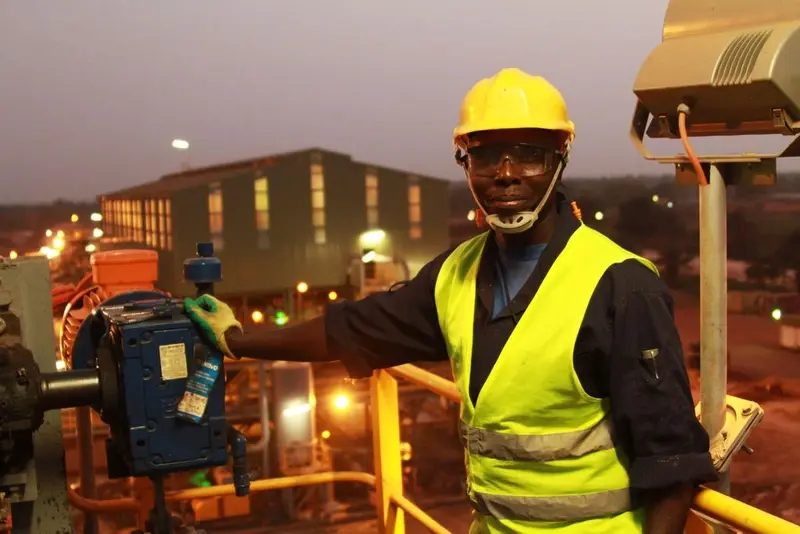
When London Mining (LOND:AIM) joined Aim in November 2009 at 192.4p, it offered investors the chance to back a multi-project iron ore business in four countries with aspirations to qualify for the FTSE 250. Fast forward to the present and London Mining at 133p sits some distance below its debut price, having travelled a difficult journey.
The iron ore market has crashed, dampening the commodity price and taking iron ore miners as its prisoner. London Mining saw its shares peak at 432p in the good days (April 2011). Now it lags in the doldrums despite a barrage of 'buy' recommendations from the analyst community. The FTSE 250 inclusion will have to wait for another day as its £184 million market cap is significantly below the required threshold.
Today's full-year results have knocked 1.1% off the share price because the miner says its Phase 1 expansion plans in Sierra Leone will cost an extra $20 million, taking the total bill to $340 million. Yet this is indicative of the mining industry as a whole with widespread cost inflation. As we write in today's new issue of Shares, investors bullish on the long-term commodity story may wish to embrace the sector's share price weakness and build a portfolio of companies that could thrive in the future.
Our article in Shares focuses on miners that pay a dividend higher than the FTSE All-Share's 3.3% average yield. That doesn't apply to London Mining, yet it could join the dividend brigade in the medium term. Chief executive officer Graeme Hossie says that London Mining will be in a position to consider dividends and share buybacks in approximately three years' time.
The company will start to throw off serious amounts of cash from this year onward as production increases at its flagship mine, Marampa, in Sierra Leone. It doesn't need the money to finance large projects in Greenland and Saudi Arabia - they will be addressed separately through strategic partners. Yet it does have priorities for cash before shareholders get their share, being investment to increase production capacity at Marampa so that it can have a long mine life.
Jefferies says that London Mining's 'inexpensive valuation' does not reflect the near-term ramp-up of its iron ore business or the potential for later-stage growth. We believe that commodity bulls should look for such traits when taking advantage of sector weakness. Jefferies adds the following comments on London Mining: 'Its premium iron ore product should have resilient pricing and demand base, while the ability to arbitrage freight rates to Europe/Asia should maximise realised prices. As Marampa is de-risked, we expect London Mining's shares to perform well.'
The risks to clear will be Marampa's expansion as there's a serious uplift in production around the corner. Until that is running smoothly, the shares could remain volatile in the absence of any appreciation in the iron ore price. Costs need to come down to make its iron ore shipments profitable after factoring in $35.2 million of corporate overheads. Ten directors were paid just over $6 million combined in 2011, of which 42% went to Hossie and finance director Rachel Rhodes. We'll find out next month when the annual report is published how much each director took home including bonuses in 2012.
It also has to regain market credibility after disappointments with other parts of the business. Since joining Aim, London Mining has been dragged into disputes with two projects - one in China has been resolved (and exited) but operations in Saudi Arabia remain in stalemate with the miner helpless until the 75% owner of its Wadi Sawawin project - National Mining Company - resolves its differences with proposed engineering firm STX Heavy Industries. Expansion into Colombia hasn't gone to plan because commodity price weakness has made the operations economically unappealing. That's now up for sale following a $66.3 million provision on the value of the asset. That includes writing off $14.6 million exploration costs. (It is worth remembering that part of the Colombian assets were bought from Hossie in March 2010 - his share of the transaction was worth $825,000).
That leaves the Isua project in Greenland to address. A recent change in government hasn't helped with the permitting process but London Mining reckons it could get a positive result this year. It wants to bring in a strategic partner to fund the development of the large iron ore prospect. This will ultimately see London Mining's stake diluted, but the miner insists it will not sell out completely and that it will be the operator.
Liberum says London Mining's shares are in 'value territory'. Credit Suisse reckons the shares are worth 200p but sees upside to this target through potential joint ventures and successful project delivery. Until these events happen, the iron ore price will ultimately guide the share price. Goldman Sachs earlier this week downgraded its iron ore price forecast to $139 per tonne from $144 per tonne, maintaining a longer-term bearish view. It says future demand will not be sufficient to absorb new production capacity. That means bringing down costs becomes the over-riding factor for iron ore miners to stay afloat.





